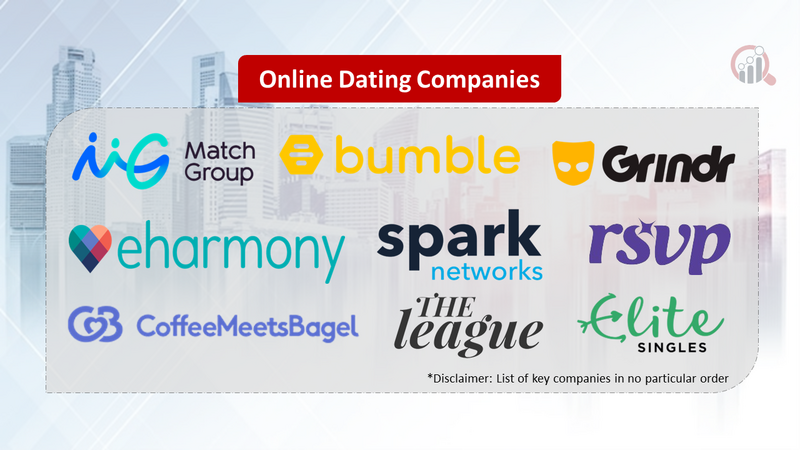The Competitive Landscape of Online Dating:
The online dating market, once a niche corner of the internet, has blossomed into a multi-billion dollar industry. Fueled by changing social norms, technological advancements, and a growing desire for connection, this dynamic landscape boasts a diverse range of players vying for user attention and market share. Understanding the competitive landscape is crucial for established platforms and aspiring entrants alike.
Key Players:
- Match Group, LLC (Tinder)
- Bumble Inc.
- Grindr LLC
- eHarmony, Inc.
- Spark Networks, Inc.
- The Meet Group, Inc
- rsvp.com.au Pty Ltd.
- Coffee Meets Bagel
- Cupid Media Pty Ltd.
- Elite Singles
- The League App, Inc.
Strategies Adopted:
- Algorithm Refinement: Platforms continuously refine their matching algorithms to improve user experience and connection success rates. This involves incorporating AI, machine learning, and user behavior data to create more personalized recommendations.
- Freemium Model: Most platforms adopt a freemium model, offering basic features for free and premium features like advanced search filters, unlimited messaging, and profile boosts for a subscription fee. This balances accessibility with revenue generation.
- Diversification: Leading platforms are expanding their offerings beyond core dating functionalities. Bumble, for example, launched Bumble BFF for platonic friendships and Bumble Bizz for professional networking. This diversification strategy attracts a wider user base and increases engagement.
- Marketing and Branding: Building brand awareness and attracting new users is crucial. Platforms utilize targeted online advertising, influencer collaborations, and strategic partnerships to reach their target demographics.
Factors for Market Share Analysis:
- User base size and demographics: The number of active users and their key characteristics, such as age, location, and interests, are crucial indicators of market reach and potential.
- Revenue generation: Analyzing subscription models, in-app purchases, and advertising revenue provides insights into a platform's financial health and growth potential.
- User engagement: Metrics like session duration, message frequency, and conversion rates to paying users indicate user satisfaction and platform stickiness.
- Brand perception and reputation: Positive user reviews, media coverage, and overall brand image play a significant role in attracting and retaining users.
New and Emerging Companies:
The online dating landscape is constantly evolving, with new startups entering the market with innovative approaches. Hinge, for example, focuses on deeper connections through its "We Met" feature, while Clover utilizes gamification elements to encourage user interaction. These emerging players challenge established platforms and contribute to market dynamism.
Current Company Investment Trends:
- Artificial intelligence and machine learning: Platforms are investing heavily in AI-powered algorithms to personalize user experiences, improve matching accuracy, and predict user behavior.
- Video and live features: Integrating video chat and live streaming functionalities enhances user engagement and provides a more immersive dating experience.
- Virtual reality and augmented reality: The potential of VR and AR in creating interactive and personalized dating environments is being explored, offering exciting future possibilities.
Latest Company Updates:
Jan 25, 2024, The popular LGBTQ+ dating app SCRUFF has been acquired by Bumble for an undisclosed amount, expanding Bumble's reach in the community.
Jan 18, 2024, The Match Group, owner of Tinder, Hinge, and Match.com, is under investigation by US regulators for potential anti-competitive practices.
Jan 10, 2024, Features like live video calls and virtual dates are becoming increasingly popular on dating platforms, driven by the pandemic's impact on social interactions.












